Universidad Técnica Federico Santa María
Inicio » University » Our History
The materialization of a legacy
The beginnings of the Universidad Tecnica Federico Santa Maria started with the altruistic dream of Don Federico Santa María, who laid the foundations of the University through his testamentary will in Paris in 1920. In his will, he expressed to his executors his desire to contribute to the material progress and broaden the cultural horizon of his nation; altruistic ideas with which he sought to facilitate the entry into academic life of disadvantaged but outstanding compatriots with no other requirement than merit, aptitude and high academic performance.
One year after his death, on April 27th, 1926, the creation of the Foundation that bears his name and the implementation of a University that seeks the integral formation of its students, considering academic excellence in professional, scientific and human education, based both on the universal values of man and their social responsibility, is determined. Thus, his dream becomes the living testimony of the philanthropy of the benefactor.
The executor, Agustin Edwards McClure, understood this and complied exactly with this mandate. As instructed, he moved to Germany in search of a teaching staff in line with the size of the institution conceived by Santa Maria. There, Edwards hired the services of Professor Karl Laudien, the first Rector of the Institution, and a group of excellent teachers brought from the Old Continent. Thus, in 1928, the construction of the Escuela de Artes y Oficios (School of Arts and Crafts) and the Colegio de Ingenieros (College of Engineers) José Miguel Carrera was undertaken.
In 1929, when the Board of Directors was constituted, and under the supervision of Edwards, the idea of a university campus that would include a set of facilities, among them pavilions, workshops, laboratories, boarding schools, library, sports facilities, courtyards and gardens was projected.
The execution of these works was entrusted to the architects Josue Smith Solar and José Smith Miller -father and son, respectively- who, following the architectural lines of the Gothic Revival Tudor style, built such a magnificent work that to this day makes the city of Valparaíso proud. The site chosen to build it is specifically a sector located between the working-class neighborhoods of the Baron hill and Viña del Mar, on the slopes of the Los Placeres hill, which still retains a privileged location. Its narrow streets, passageways, courtyards and classrooms generate a feeling of admiration for such refined and pure architecture in the style of the most prestigious universities in Europe and the United States. The facilities were inaugurated on December 20th, 1937, along with the deposit of the ashes of its founder in a marble urn that guards his legacy in the front of the campus.
At the beginning of 1932, the country was plunged into a great financial crisis as a result of the problems of the world economy: production was collapsing and strong social and political conflicts were constantly occurring. Despite such an inauspicious scenario, the dream of Santa Maria was more alive than ever and the doors of the School of Arts and Crafts and the José Miguel Carrera College of Engineers were opened, thus initiating academic activities based on technique and arts, which over time have become a fundamental pillar in the technological and industrial development of our country.
It was in the mid 1930’s when the Santa Maria Foundation acquired the status of a Higher Education Institution by Supreme Decree No. 3048 and was renamed Universidad Tecnica Federico Santa Maria. Since then, the University has built a solid trajectory of growth and prestige, leading science and technology education.
Since its early years, the University has consolidated its excellence and quality not only in the educational growth and teaching of its students, but also in the cultural extension and constant contribution to the society in which it was born, participating in exhibitions with pavilions, machinery, professors and students that testify to its commitment to the scientific and technical work of the time, adhering to and making clear the principles and values of its benefactor: to contribute to the service of the community. Along the same lines, the Night School, the Apprentice School, the Higher Technical School and finally the Professional School of Boatswains and the College of Engineers were created in that decade.
Following the same precepts of collaborating with the development of the country and the aggrandizement of our nation, the Scientia magazine was created in 1934, contributing to intellectual progress and becoming the voice of university work. The radio station Universidad Tecnica Federico Santa Maria, founded in 1937, became the first university radio station in Chile and Latin America, focused on broadcasting informative and cultural programs.
On the other hand, in 1939, faithful to the values given to the first generations of graduates of the University, the Alumni Association (AEXA USM) was created, a legally recognized corporation that over the years has maintained a constant link between the campus and its graduates, strengthening the sense of belonging and identity with the institution. The association stands out for its spirit of solidarity and selflessness by promoting funds to provide welfare to countless students through scholarships and welfare support.
On April 19th, 1941 the Aula Magna was inaugurated, the center of the artistic and cultural life of the University and the city, which to this day hosts one of the most important artistic seasons in the country.
In the 1950’s, the University was academically consolidated and the construction works contemplated in the original project were completed. In addition, in 1960, the Graduate School was created, channeling the enormous need for improvement and postgraduate specialization of its professionals. In 1963, the first Doctor of Engineering degree in Latin America was awarded.
With the new winds brought during the 1960s thanks to the social movements, women began to play a more decisive role in different areas, gradually gaining space by entering politics, the labor field and higher education. Thus, in 1964, the first woman received her degree at the University, with a growing participation of women over the years, both qualitatively and quantitatively.
As time went by, the University expanded its study programs, diversifying to respond to the growing demands of the 1970s in the areas of technology, science and innovation, experiencing an accelerated expansion and adaptation to the new times.
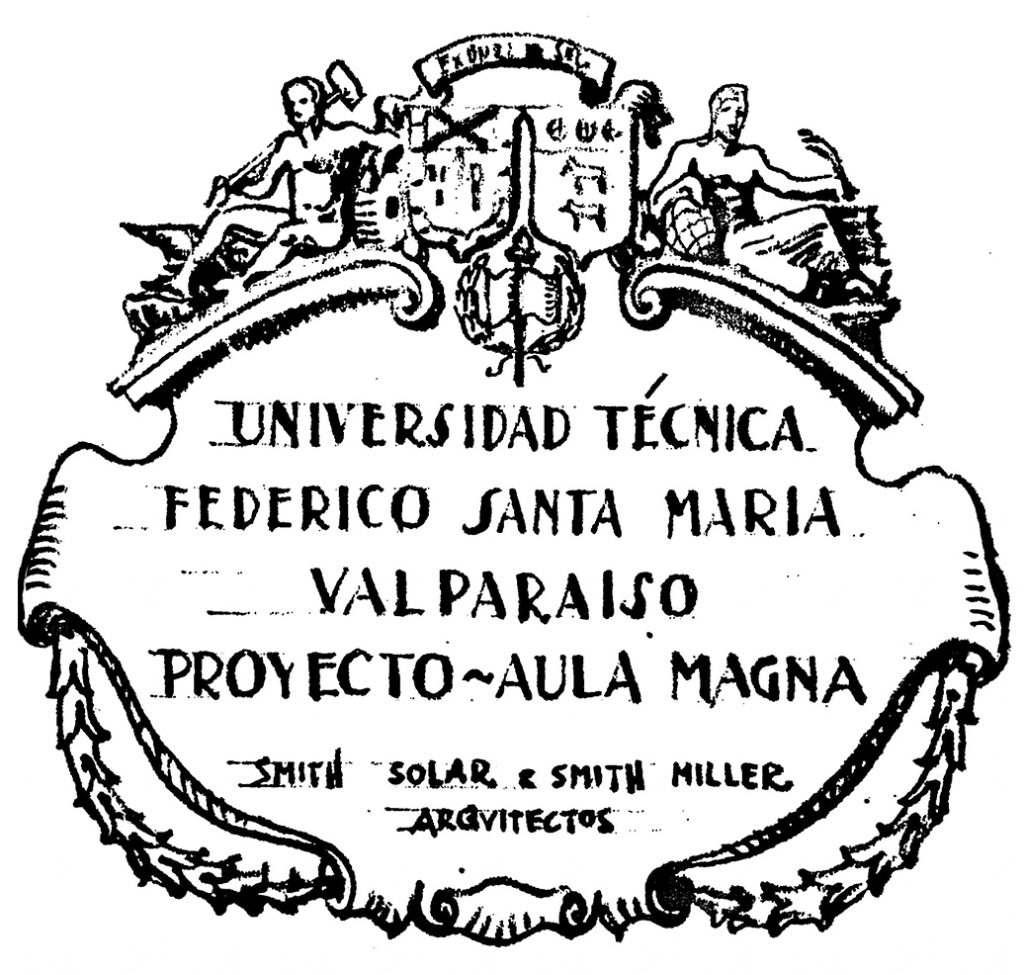
Smith-Solar vignette
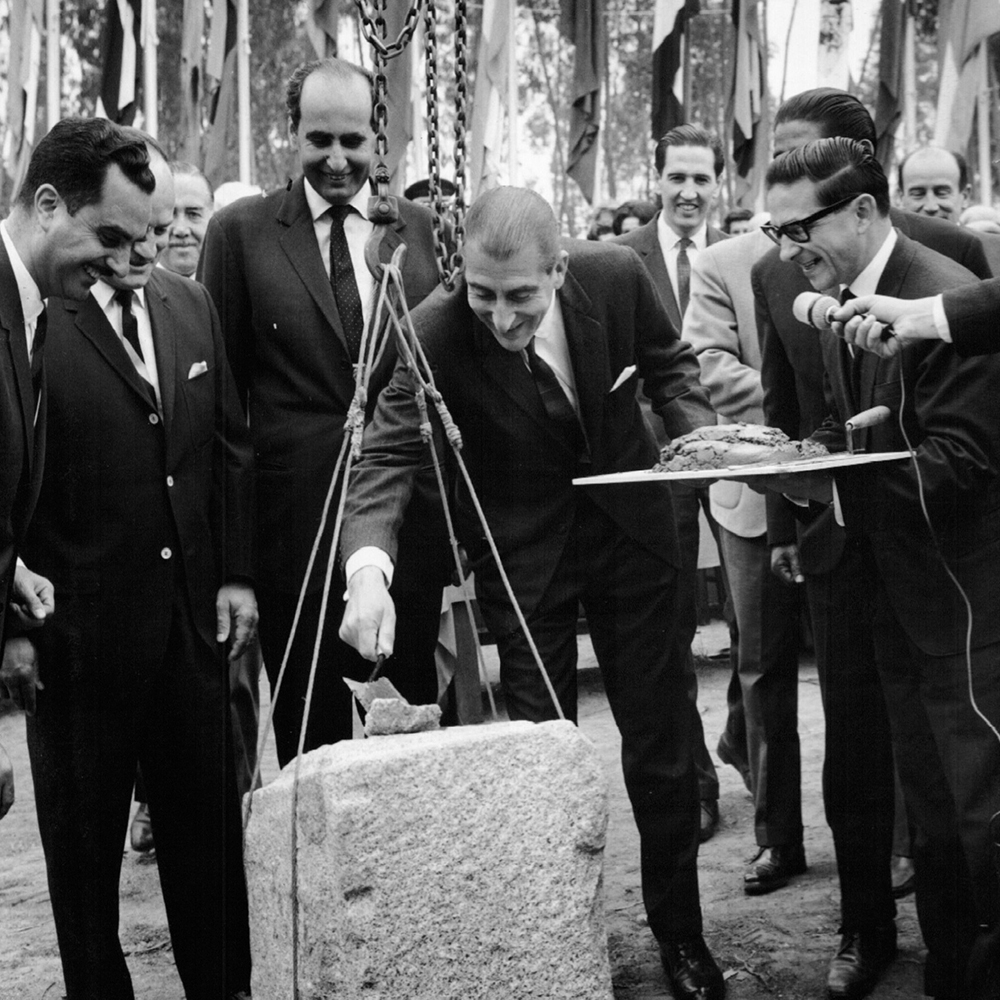
Former President of the Republic Mr. Eduardo Frei M. at the laying of the foundation stone of the Viña del Mar Campus.
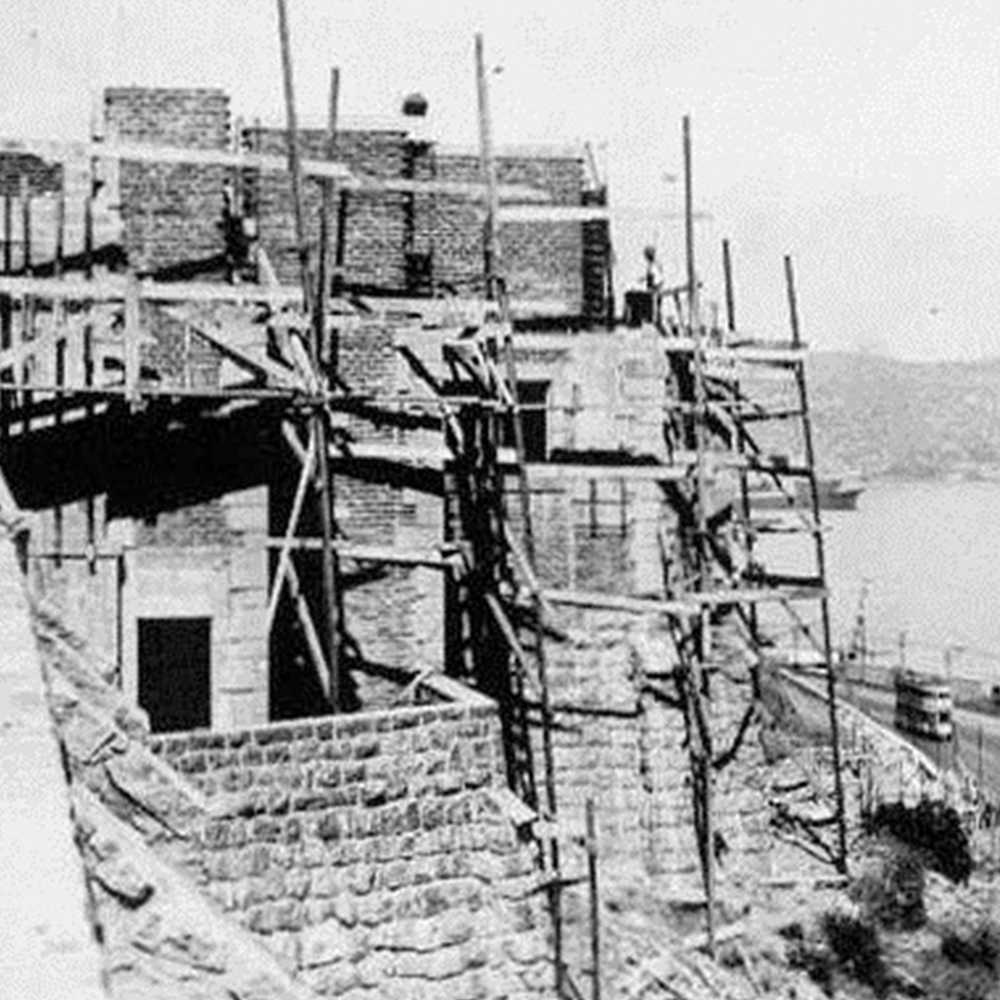
President’s House, east facade view
Expansion and consolidation of leadership
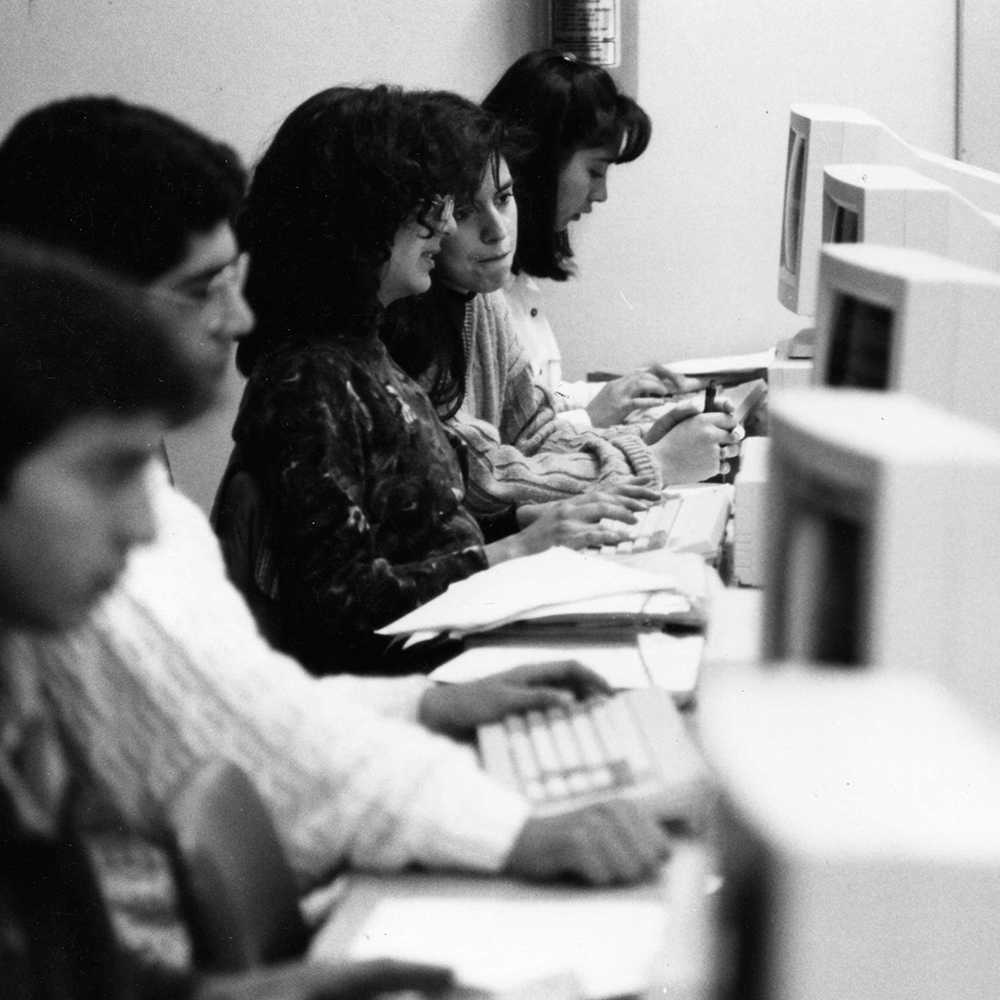
USM stands out for the training of professionals of excellence

Construction of the first trusses for the Hall of the Main Campus in Valparaíso.
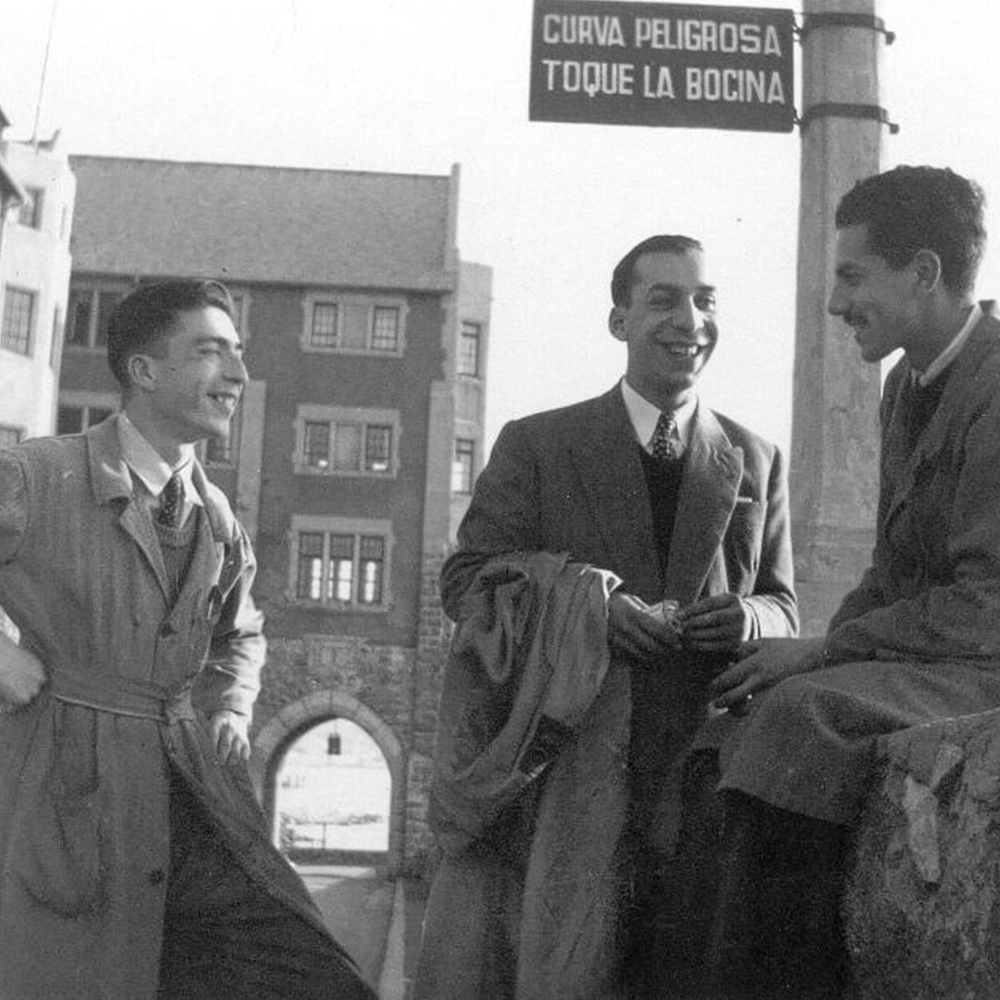
USM students at the Main Campus in Valparaíso
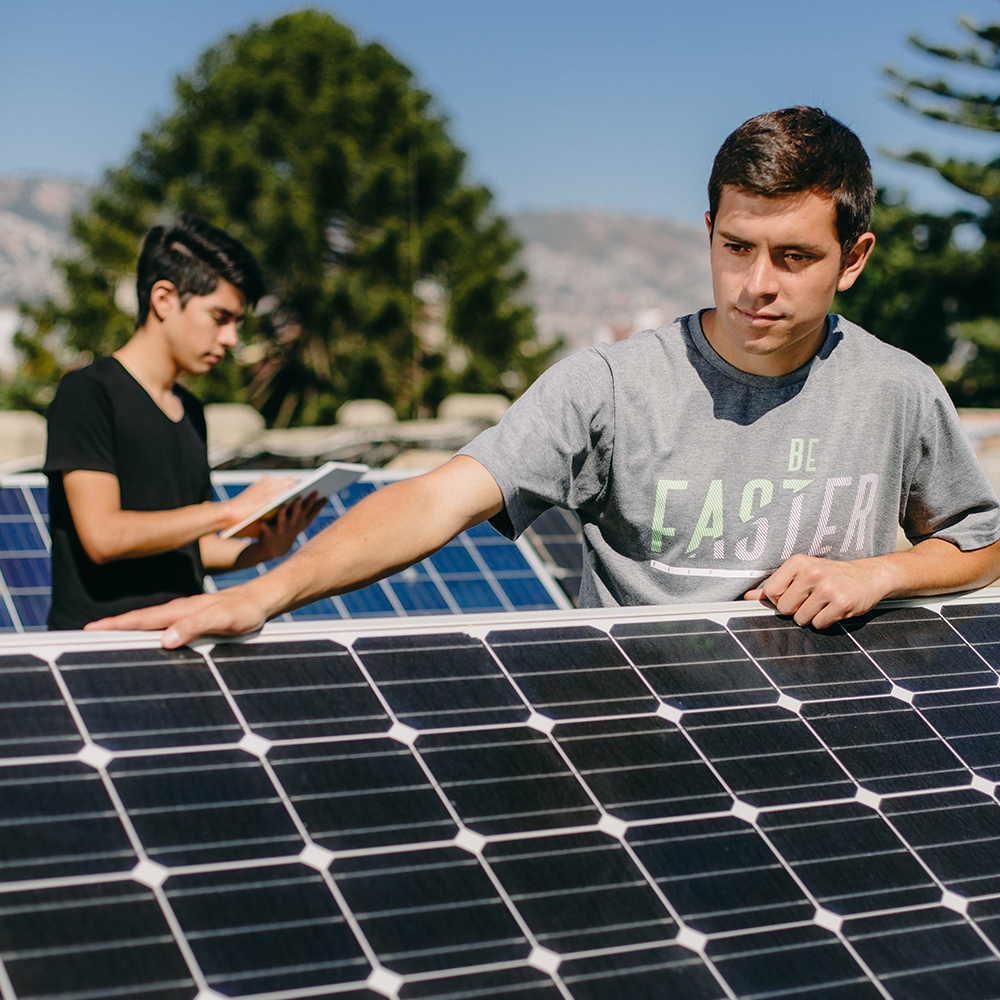
Since 2020, USM has been certified for electricity consumption from renewable energies only.
Following the precepts of its founder, of service to the community and always looking to the future and the development needs of the country, since the 1960’s a process of national and international expansion began
On October 9th, 1966, in the El Olivar sector, and in the presence of the President of the Republic at that time, Eduardo Frei Montalva, the first stone of the Escuela Técnico Profesional (Professional Technical School), currently the Viña del Mar José Miguel Carrera Campus was laid, given the growth experienced by the School of Arts and Crafts, which at that time operated at the Main Campus in Valparaíso. The new campus opened its doors to teaching activities in 1969, with the objective of training technicians of excellence in science and technology, covering the areas of construction, food, electrical engineering, chemistry, mechanics and design. All of these specialties were very necessary at that time, when a marked industrialization process was underway.
In the same year, in the Biobio region, the construction of the School of University Technicians began, currently the King Baudouin of Belgium Concepcion Campus, in appreciation of the contribution of the Belgian government in terms of financing and technical teaching assistance. For several years and under the encouragement of the Economic Development Agency (CORFO), the authorities and the industrial entrepreneurs of the area had been considering the idea of providing the region with an important educational institution oriented to the scientific-technological area, given the lack of qualified labor for industrial and business progress. Thus, the new center began its curricular activities in 1971, with study programs such as Electronics, Electricity, Maintenance Mechanics and Analytical Chemistry. Its official inauguration took place in 1972, with the attendance of the President of the Republic, Salvador Allende Gossens; the Belgian ambassador in Chile, Franz Taelemans and the authorities of the campus. Three years later, the Escuela de Técnicos Universitarios (School of University Technicians) provided this area with its first graduates, who gave a strong impetus to the region.
In the 1970s, while the country was experiencing a turbulent political life and the radicalization of social movements, the University established priority research and innovation guidelines for educational work and practical and theoretical knowledge, enhancing its contribution to human knowledge. Thus, emphasis was placed on expanding high-level knowledge, favoring the design, planning and research of development projects.
In 1974, the Office for Research and Technical Assistance was created, divided into the Office of Scientific and Technological Research and the Office of Services and Technical Assistance, the former to promote research within the University and the latter to coordinate research practices and projects.
In the 1980s, the celebration of the fiftieth anniversary took place under an essentially academic approach, with symposiums, conferences, awards and important visits: promoting the dissemination of university activities to the community. The University was reorganized and restructured academically and administratively, dividing itself into three large areas that brought together all the disciplines taught: Faculties of Science, Engineering and Administration. Likewise, the University faces internationalization with clear guidelines, generating a concrete approach with first level European and United States institutions, with the objective of promoting scientific, technological and student exchange.
In the 1990s, a new period of expansion began, which continues to this day. In this context, two new campuses were created in 1995: in Santiago, in the area of El Golf, Las Condes, with careers in the areas of administration and computer science, and Rancagua; the first was moved in 2000 to its current location in the district of Vitacura, and the second was reopened in 2009 with new and larger facilities. The opening of the Guayaquil Campus in Ecuador in 1996 was a concrete response to the inevitable globalization of knowledge, becoming the first Chilean higher education institution to undergo a process of internationalization in accordance with its strategic development plan. Likewise, in 1996, the Office of International Affairs (OAI) was created to safeguard the Institution’s academic and research relations with the world community.
Following the same path of satisfying the demands of the new times, the Academy of Aeronautical Sciences (ACA), in alliance with the Linea Area Nacional (LAN-Chile), began its work in 2000, strengthening the ties between academic activities and the business world to train top-level professionals in the area.
In 2007, the Instituto Internacional para la Innovación Empresarial (International Institute for Business Innovation) (31E) was created to promote the productive development of the country through entrepreneurship, innovation and the creation of new companies oriented to the global market, becoming a coordinating entity of the different actors that work in the economic and new technologies fields, through its units and centers of specific competencies.
Today, society is facing a challenging global scenario, where innovations must provide solutions that have a clear value for people and where professionals are active agents of change, sensitive to social and environmental impacts, and not simply creators of technologies. The mission of scientific, professional and human training within a framework of excellence, therefore, imposes the challenge of creating and disseminating new knowledge, preparing suitable people to be at the forefront of the country’s development
For this reason, in the last decade, the University has driven a strong quantitative and qualitative growth, which has consolidated its leadership in engineering, science and technology.
The increase in scientific research and in the number of undergraduate and graduate students has been accompanied by a strong investment in infrastructure to meet new needs, while maintaining the Institution’s seal of quality and prestige. In this context, in 2008 the Technological Innovation Building was inaugurated, which houses the centers dedicated to applied research, with the task of generating value and strengthening links with the productive sector.
With the purpose of strengthening the presence of the University in the capital of the country, in 2009 a new campus was inaugurated in Santiago, specifically in the district of San Joaquin, teaching the most traditional areas of engineering, such as: Civil Works, Electricity, Mechanics, Mining and Chemistry, as well as Computer Science, which was taught in Vitacura. This new campus is an important part of the expansion and consolidation strategy of the University in such an important location as the capital of the country, becoming a nationally oriented University, playing a fundamental role of leadership in the training of professionals of excellence for the development of society and the country.
That same year, following the line of growth in infrastructure and equipment for the improvement of the teaching-learning process, the first stage of the Placeres Building with new classrooms and laboratories was delivered, continuing with a second stage that was inaugurated in 2017.
The important role played by the campuses, in permanent development, has also been reflected in the need for new facilities for their professors, staff and students: in 2010 the Mechatronics building was inaugurated in Concepcion, and in Viña del Mar, the Computer Science building was inaugurated in 2009 and the Santa Maria Carrera building in 2012. The latter is the largest project built at this campus in its history.
The University understands that excellence in education requires the best spaces so that the members of its community can carry out their work with the greatest comfort and safety.
The work of the University is not only to train professionals with extensive technical and theoretical knowledge, but also to deliver principles that contribute to the enrichment of the human spirit and the enhancement of society. Science, art and sports converge in the same space, merging in the soul of the “sansanos” (colloquial name for USM students). A comprehensive convergence of principles and values based on pluralism and independence that help learning and the discovery and the construction of a more just and supportive society.
Today, at the beginning of the 21st century, past and present come together in this University. The impetus of the new generations keeps alive the will of Mr. Federico Santa Maria Carrera, who let fly his altruistic and enterprising spirit without limits, more than a century ago. His legacy is the fruit of his vision, will and imagination, values possessed by few men called to build history.